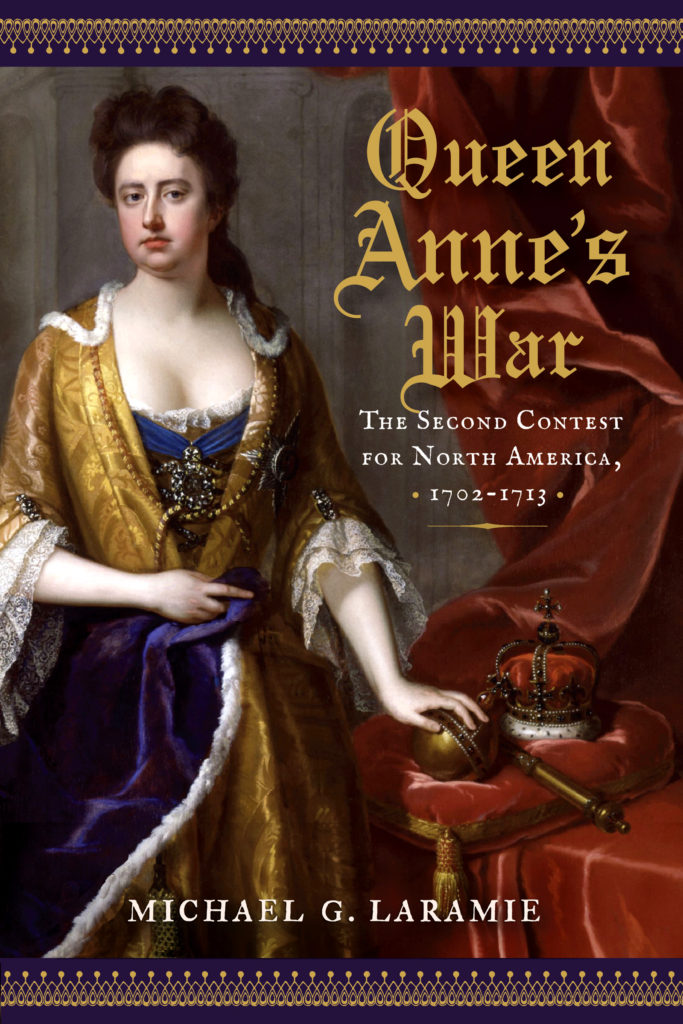

Queen Anne's War
The Second Contest for North America, 1702–1713
Select Your Format:
Hardback$40.00eBook
$35.00 Add to Cart Save 25% on every book by joining our Book Club


Select Your Format:
HardbackFought from New England and the Great Lakes in the north and Florida and Georgia in the south, the second conflict in the long French and English struggle for supremacy in North America
Although King William’s War (1689–1697) had established the basic disputes between New France and the English colonies, the conflict had resolved little beyond making it clear that the smaller French colony was more than capable of defending itself. When news of the War of Spanish Succession (1701–1714), or Queen Anne’s War as it would become known in North America, arrived in 1702, few envisioned that the resumption of the previous conflict would grow to engulf eastern North America from Newfoundland to Florida, pitting the Spanish, English, and French colonies along with their respective native allies into a concerted contest for control of the continent. From the storming of Spanish St. Augustine and the opening shots along the Maine frontier, through the implementation of a series of profit-driven Indian Wars and the destruction of the Spanish mission system in Georgia and Florida, to the direct involvement of Britain in the closing days of the conflict, Queen Anne’s War: The Second Contest for North America, 1702–1713 carries the reader through this oft forgotten, but crucial period in North American history.
Told from the halls of power in North America and Europe, and through the eyes of the men and women who found themselves embroiled in this brutal realignment of colonial interests, Queen Anne’s War recreates the world of early North American expansion at the ground level, providing riveting accounts of the battles across settlements and wilderness as well as the motives, conditions, triumphs, and failures of the Europeans and their respective Native American allies. Based on extensive primary source research and command of English, French, and Spanish sources, the narrative not only describes the economic and geopolitical ramifications of the war that reshaped North America, but intriguingly reveals the sense of independence emerging in the colonies, from Puritan New England to plantation South Carolina, at the close of the war.

Michael G. Laramie is an award-winning historian and author of King William’s War: The First Contest for North America, 1689–1697, By Wind and Iron: Naval Campaigns in the Champlain Valley, 1665–1815, and Gunboats, Muskets, and Torpedoes: Coastal North Carolina, 1861–1865. He lives with his family in Arizona.
“The book does a fine job of describing one of the more obscure conflicts in American history. It is valuable for its insights into the military thinking of the day and some of the benefits of superb planning of wilderness campaigns. It also illustrates nicely the extreme difficulties facing colonial administrators and military leaders on the uncharted frontiers of North America. It is a book worthy of the shelves of anyone interested in colonial warfare or fascinated by the complex international relationships caused by dynastic intermarriages and alliances. The final bonus is this is a good read done with style and clarity.”—Journal of America’s Military Past
“Laramie is particularly good at describing the fighting in this cockpit of North America. . . . [Queen Anne’s War is] a clear, readable chronicle of the events of this little-known conflict.”—Journal of Military History
“Thanks to temporal proximity to The American Revolution and the literary works of James Fenimore Cooper and Francis Parkman, the French and Indian War (Seven Years War in Europe) is the most famous of the Anglo-French conflicts over the North American colonies. However, it was the fourth and culminating conflict, so Laramie reveals in presenting the relatively unknown yet pivotal earlier struggles. Laramie’s contention is that both King William’s War, 1689-1697, and Queen Ann’s War, 1702-1713, known respectively in Europe as The War of the League of Augsburg and The War of the Spanish Succession, along with King George’s War, set the stage for more than a half century of conflict and generational hostility from the frontiers of Maine to the Gulf Coast. Laramie recounts waves of frontier raids waged by both French and English combined with Native American allies, ravaging settlements from Maine to Florida. Such chronic carnage was supplemented by destructive but usually indecisive descents upon coastal cities, with English attacks ranging from Port Royal in Acadia (Nova Scotia) to St. Augustine in Spanish Florida and French assaults on St. John’s, Newfoundland, or Charleston, South Carolina. Logistical challenges and endemic disease afflicted both sides, as well as bad luck, such as the storm that devastated the English-Colonial fleet that might have taken Montreal in 1711. However, over time the English naval blockade as well as battlefield success in Europe ensured an English (after 1707 Act of Union), British victory, clearing the French out of both Newfoundland and Nova Scotia, although the remnants of French Canada survived along the St. Lawrence River. Queen Anne’s War is well written and ably supported by the excellent use of English, French, and Spanish sources, while not ignoring the Native American point of view. This highly recommended book should now be considered the standard history.”—William John Shepherd, University Archivist and Head of Special Collections, The Catholic University of America